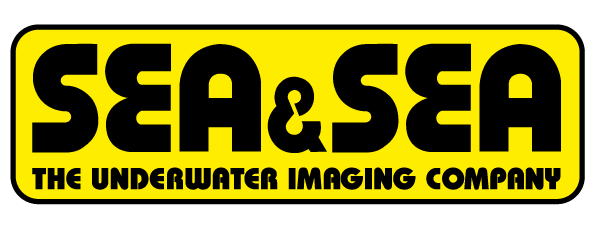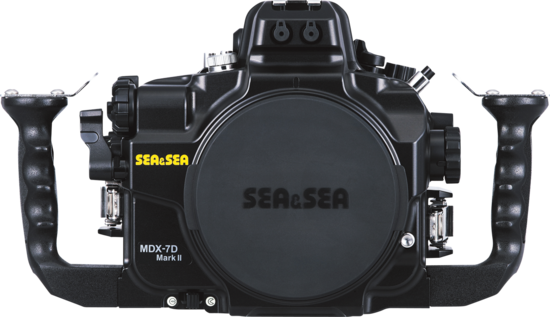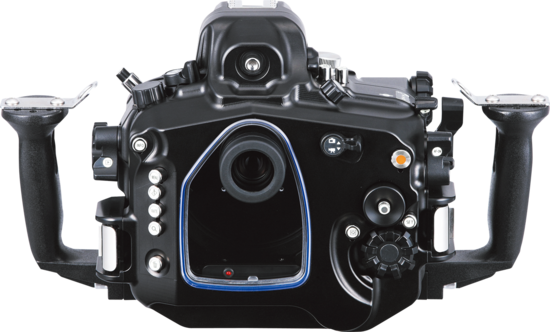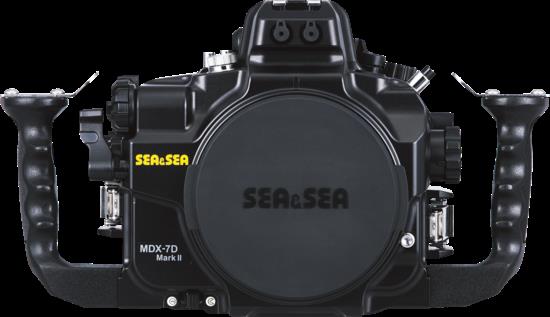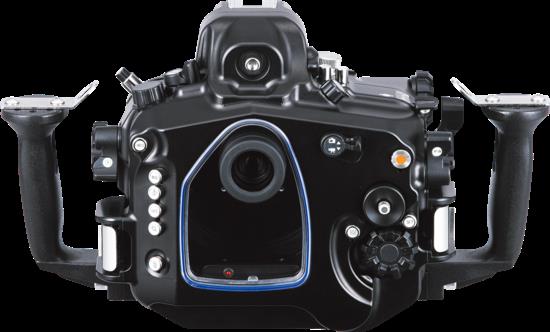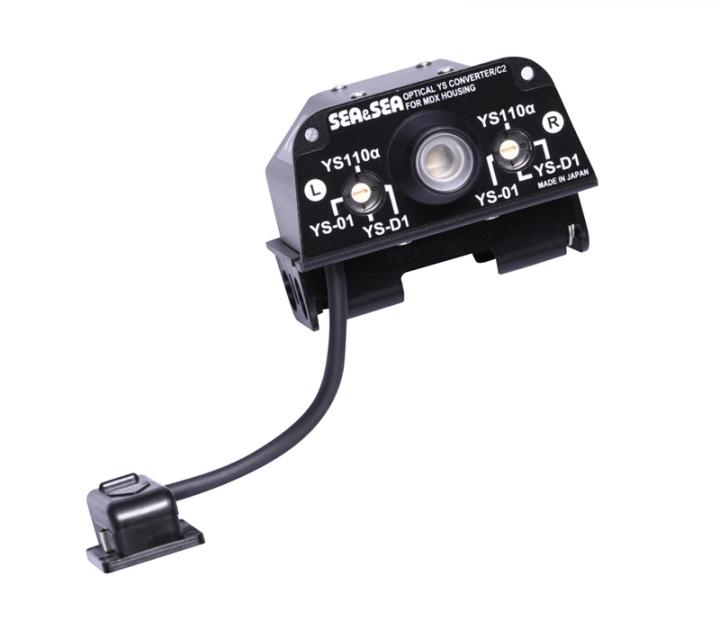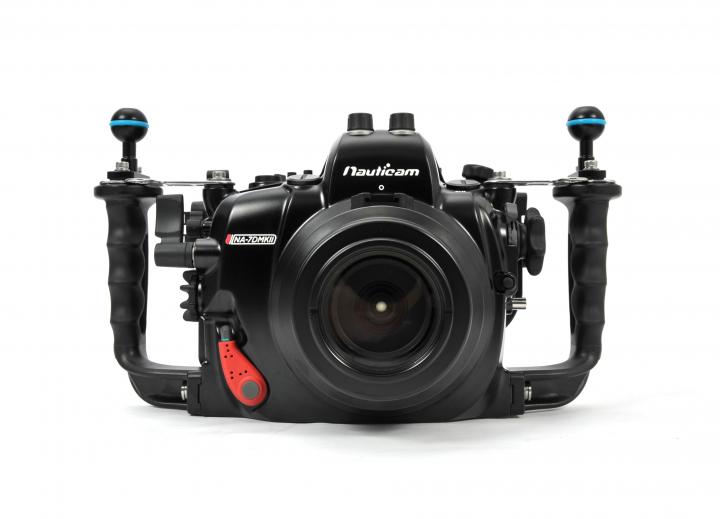Das neue MDX-7D Mark II Sea&Sea Unterwassergehäuse für die Canon EOS 7D Mark II verfügt über neu gestaltete Bedienelemente und ist kompatibel mit dem optischen YS-Wandler.
- Ausgestattet mit zwei Glasfaserkabelbuchsen.
- Das Gehäuse verfügt über zwei Zubehöranschlüsse. Eine ist für den N-Strobe-Anschluss und die andere für den HDMI-Ausgang ausgelegt.
- Der Objektiventriegelungsknopf der Kamera ist von der Außenseite des Gehäuses zugänglich.
- Das Loch für die Befestigungsschraube befindet sich auf der mittleren Unterseite des Gehäuses.
- Ausgestattet mit zwei Opfer-Zinkdioden (eine auf der Vorderseite und die andere auf der Rückseite), um Elektrolytschäden zu vermeiden.
- Der eingebaute Lecksensor warnt Sie sofort vor Wassereintritt.
- Eine Nenntiefevon 100m macht das Gehäuse ideal für Tech Diving.
Optischer YS-Konverter/C kann in das Gehäuse eingebaut werden
Kompatibel mit dem neuen optischen YS-Konverter/C2 für MDX-Gehäuse, der das Blitzschuh-TTL-Signal der Kamera in ein Lichtsignal umwandelt. Sowohl der TTL- als auch der manuelle Blitzmodus können über ein Glasfaserkabel II vom Gehäuse aus genutzt und gesteuert werden. (Für die Verwendung des optischen YS-Konverters ist ein Glasfaserkabel erforderlich.)


Kompatibel mit den Suchern VF180 1.2x und VF45 1.2x.
Durch die Befestigung des VF180 oder des VF45 Prismensucher (Vergrößerungsverhältnis von 1,2x) am Gehäuse erhöht sich die Vergrößerung um 1,2x und das gesamte Sichtfeld ist gleichzeitig sichtbar.


Lumineszierende Aufkleber
Wichtige Bedienelemente, einschließlich Hebel und Tasten, leuchten bei Dunkelheit.

| Body Material: | aluminum |
|---|---|
| Camera System: | DSLR |
| Strobe connector: | optical Sea&Sea |
| portsystem: | DX |
- Material: korrosionsbeständige Aluminiumlegierung (bearbeitet)
- Griff: korrosionsbeständige Aluminiumdruckgusslegierung
- Nenntiefe: 100m
- Abmessungen (BxHxT) 341 x198 x 141.5mm
- Gewicht ca. 3.000g (nur Gehäuse)
1 Sea&Sea MDX-7D MARK II Unterwassergehäuse für Canon EOS 7D MARK II
Login

